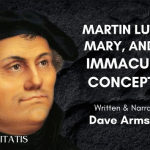CART PULLING THE HORSE
This CMTR entry has to do with how a researcher/writer uses secondary sources. There are two ways (as well as a few others) of using quotes/resources in the formation of your thesis argumentation. Some research is referred to that demonstrates where you got your ideas and traces the origins and trajectory of your thought. This is essentially how we start our research. A second type of citation is where you are using the scholarship of others to confirm or affirm what you discovered on your own. This second kind is more about supporting your research and using a consensus-of-support sort of argument.
In your thesis, you are probably going to do both kinds of citing, because you want to show where your work comes from and also how your ideas fit together with the work of others.
The MISTAKE comes especially when you lean too heavily on the second kind (where you end up primarily using secondary sources only as confirmations that you are ‘right’). To a reader/evaluator, this can come across as proof-texting if it is done too much.
How do you avoid this? I think I have given this advice before, but make sure that you are not just looting when you research. Looting is when you only read a relevant page or two from a book you thought might be related to your research. Try to train yourself to read whole chapters, whole articles, and, if possible, whole books. For me, sometimes the best stuff (not quotes, but good solid research) is found in places you wouldn’t have guessed.
This is a preventative measure. As far as after you have written your thesis, go back through the footnotes and see what the ‘balance’ is like. There is no perfect recipe, but you can see if you are leaning too heavily on one side.
The real mistake that is made here is only using sources as pats on your back rather than foundations. That is like…letting the cart pull the horse. Not a perfect analogy, but you get the idea. The overall tendency for those who make this mistake is to be lazy by not thinking creatively about what makes for good sources as influences. Be willing to read more than just commentaries, dictionaries, and books in the ‘appropriate’ section of your library. Read books outside your discipline, but that can inform your method. Be risk-taking in making connections – your supervisor or editor or friend-who-reads-your-work-that-is-a-professional will tell you if the links are not working.











